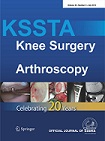
ARTHROPLASTY
Mobile bearing prosthesis & gap balancing not predictive of superior knee flexion at 2 yr
Knee Surg Sports Traumatol Arthrosc. 2015 Jul;23(7):1986-9294 knees to be treated with total knee arthroplasty were randomized to receive either a posterior-stabilized mobile-bearing or fixed-bearing prosthesis. The purpose of the study was to determine how a gap balancing technique and the novel posterior-stabilized mobile-bearing prosthesis affected factors predictive of postoperative knee flexion 2 years post-operation. Results indicated that only larger pre- and intra-operative flexion angles and lower BMI values were predictive of superior knee flexion angles. As well, no superiority was noted in the novel mobile-bearing prosthesis over the conventional fixed-bearing design, as of 2 years post-operative.
Unlock the full ACE Report
You have access to {0} free articles per month.Click below to unlock and view this {1}
Unlock NowCritical appraisals of the latest, high-impact randomized controlled trials and systematic reviews in orthopaedics
Access to OrthoEvidence podcast content, including collaborations with the Journal of Bone and Joint Surgery, interviews with internationally recognized surgeons, and roundtable discussions on orthopaedic news and topics
Subscription to The Pulse, a twice-weekly evidence-based newsletter designed to help you make better clinical decisions
Exclusive access to original content articles, including in-house systematic reviews, and articles on health research methods and hot orthopaedic topics
Or upgrade today and gain access to all OrthoEvidence content for just $1.99 per week.
Already have an account? Log in


Subscribe to "The Pulse"
Evidence-Based Orthopaedics direct to your inbox.
{0} of {1} free articles
Become an OrthoEvidence Premium Member. Expand your perspective with high-quality evidence.
Upgrade Now












































































